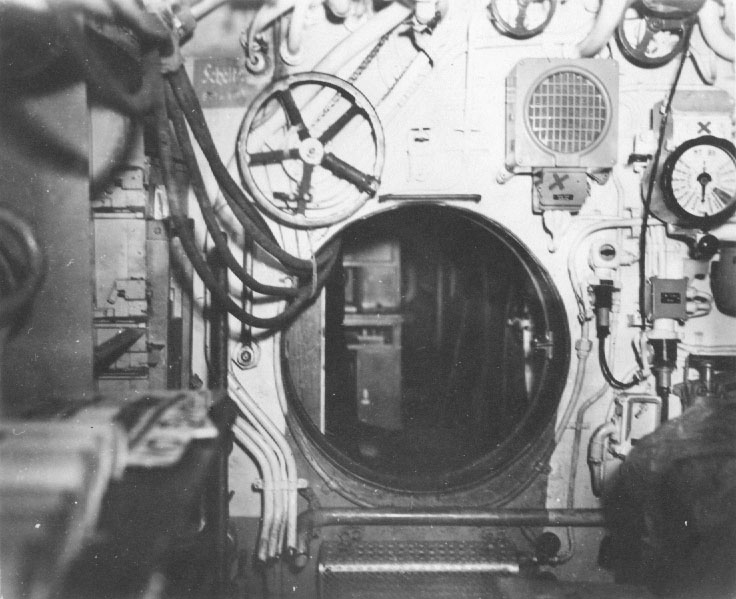Hi Gentlemen,
Puzzled by the telegraph question and the rudder angle order system adviced by Maciek, I checked the excellent manual Uboatinformation for Type VIIC , year of construction 1939 effective July 15 1940 donated by Don translated by Maciek. In chapter V the various communications are described, both acoustic, electronic and visual. Internal communication by loadspeaker is mentioned, but as far as I can see not the telephone system. Further when looking at photos of older VIICs on the locations where you have the telephones on the later VIICs, you do not find the phones as on the image below where you see a photo of der Fuehrer on the place where you should expect to see a phone. As the phones were a very important communication link I believe they definitely should be mentioned under communication in the manual, I wonder if same was not installed on the early VIICs but introduced in the later execution and as a consequence the rudder angle order knob was removed on the late VIICs. As far as I could check U 570 ( commisioned May15.th 1941) had the voicepowered telephones installed allthough of a different design and placed partly on other places than on U 995.
I was also puzzled, when I had not found description of the voice-powered telephone in the type VIIC manual. I'm sure I have been reading about it somewhere...
Indeed, in the document effective on July 15 1940, the voice-powered telephone is not mentioned. The only electrical system for passing orders was the "Broadcast and announcement system" ("Lautschprecheanlage"). As described in the manual, it consisted of the central control unit (with the amplifier) in the radio room and speakers in every U-Boat compartment. To the control unit in the radio room there can be connected a record player or radio-receiver and the music from the record or radio could be broadcast through the boat. In the same way, the microphone could be connected and the announcement could also be passed through the boat.
But this system could also be used for communicating between the battle stations. For this reason, in several places of the boat were installed terminals for connecting the headphones and the microphones. These terminals were in the aft torpedo room, E-motor room, control room, conning tower, officers room and forward torpedo room.
On the board of U995 the terminals are visible, but unfortunately without the headsets.
This system required to be powered for operation.
Some details on this system you can find in the section "II. General Announcing System" of the type IXC Design Study (
http://uboatarchive.net/Design/DesignStudiesTypeIXC.htm).

(speaker in the control room of U570)
A Tore mentioned, the British report on U570 and his experience from
KNM Kaura provide the information about second voice communication system (not present or mentioned in the 1940 manual) - the voice powered telephone.
Generally it consisted of several units located in the forward and aft torpedo room, control room and diesel engine room. In contrast to the broadcasting system, it did not require the power to operate. On the board of U995 you can see these units, but unfortunately, they are without the hand-sets. One note - the telephone unit in the forward torpedo room is not original (German war-time).
Some details on this system you can find in the section "III. Ship's Telephone Systems" of the type IXC Design Study (
http://uboatarchive.net/Design/DesignStudiesTypeIXC.htm).
And one more thing - the report on U570 also mention about rudder order telegraph.
--
Regards
Maciek